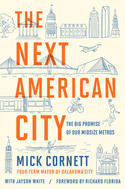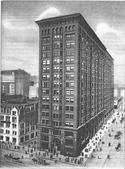One trend we’ve seen in many domains is the bifurcation of society into two tiers, the successful and unsuccessful. One way we see this divergence playing out is between cities in the same state. This NBC article looks at divergence in Ohio between Dayton and Columbus. read more »
Demographics
Welcome to Park Forest
Recently a follower sent me an interesting e-mail. He said he recently re-read The Organization Man by William Whyte, originally published in 1956. The suburban Chicago village of Park Forest, IL, about 30 miles directly south of the Loop, figured prominently in the book, as an example of the kind of Levittown-style suburban development that was taking America by storm at the time. In checking in about Park Forest today, he found that yesterday’s model of white middle class and middle management homogeneity is now a black-majority community. read more »
The Value of All Things Crazily Rich and Asian
Neither Kevin Kwan’s novel “Crazy Rich Asians” nor the movie based on it should win any prizes as literature or film. Yet the “Crazy” phenomena — both the best-selling book, its sequels and the smash movie — represent a critical moment not only in Asian, and Asian-American, history, but in how we look at race. read more »
- Login to post comments
Ten Years After Lehman Collapsed, We’re Still Screwed
The collapse of Lehman Brothers 10 years ago today began the financial crisis that crippled and even killed for some the American dream as we had known it. Donald Trump might be starting to change that, at least for Americans who aren’t determined to remain in our bluest and priciest cities. read more »
- Login to post comments
“Middle America” in America’s Urban Century
In the late 1990s and the early Aughts, when the last Gen Xers and the first Millennials were launching into their adult lives, “Urban America” was a very different place. On many fronts, the choices young ambitious graduates had were fast becoming limitless, save on one key front: the cities where they could reasonably want to live. read more »
- Login to post comments
A Walk Around Chicago’s Loop
Chicago has a storied history in skyscraper development, so much so that it has been called the birthplace of the skyscraper. Nearly all of that history occurred in and around the “Loop,” which is the historic downtown, or central business district (CBD). Recently, I took the opportunity to walk around the Loop, to photograph buildings, old and new. read more »
- Login to post comments
Cleveland and the Fight for Talent
Mark Rantala recently wrote an op-ed for Crain’s Cleveland Business that talks about Cleveland’s need for talent: read more »
- Login to post comments
A Generation Plans An Exodus From California
California is the great role model for America, particularly if you read the Eastern press. Yet few boosters have yet to confront the fact that the state is continuing to hemorrhage people at a higher rate, with particular losses among the family-formation age demographic critical to California’s future. read more »
- Login to post comments
Beginnings, Middles, and Ends
I was recently invited to give a talk at a housing conference down in Los Angeles. Once again my fellow speakers engaged in the usual arguments. Aging Baby Boomers asserted that we need to keep building more 1957 style suburban homes on the edge of the metroplex because that’s what people want and can afford, particularly once they marry and have children. Then a group of Millennials sang their sad song of high prices and a lack of options in the places they really want to live. read more »
- Login to post comments
Ethnic Flight
For the first decades of mass suburbanization, the movement from urban cores often has been referred to as “white flight” (Note 1). But now major metropolitan area living patterns indicate something much different, what might be called “ethnic flight.” The four largest racial and ethnic groups (called “ethnicities” in this article) are overwhelmingly concentrated outside the urban core, in the suburbs and Exurbs. These four largest ethnicities are White Only Not Hispanic, African American Only, Asian Only and Hispanics (Note 2). read more »
- Login to post comments





















